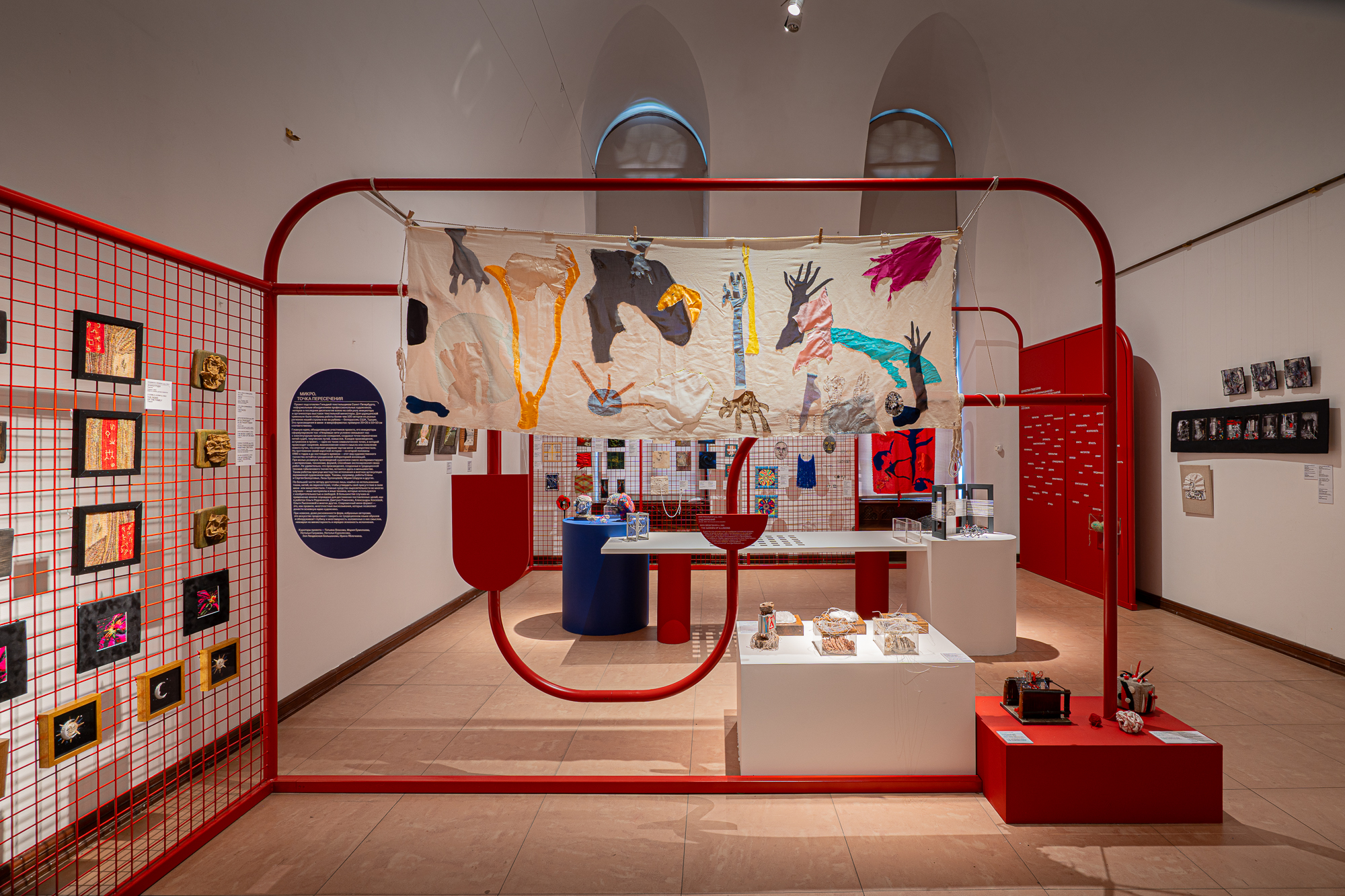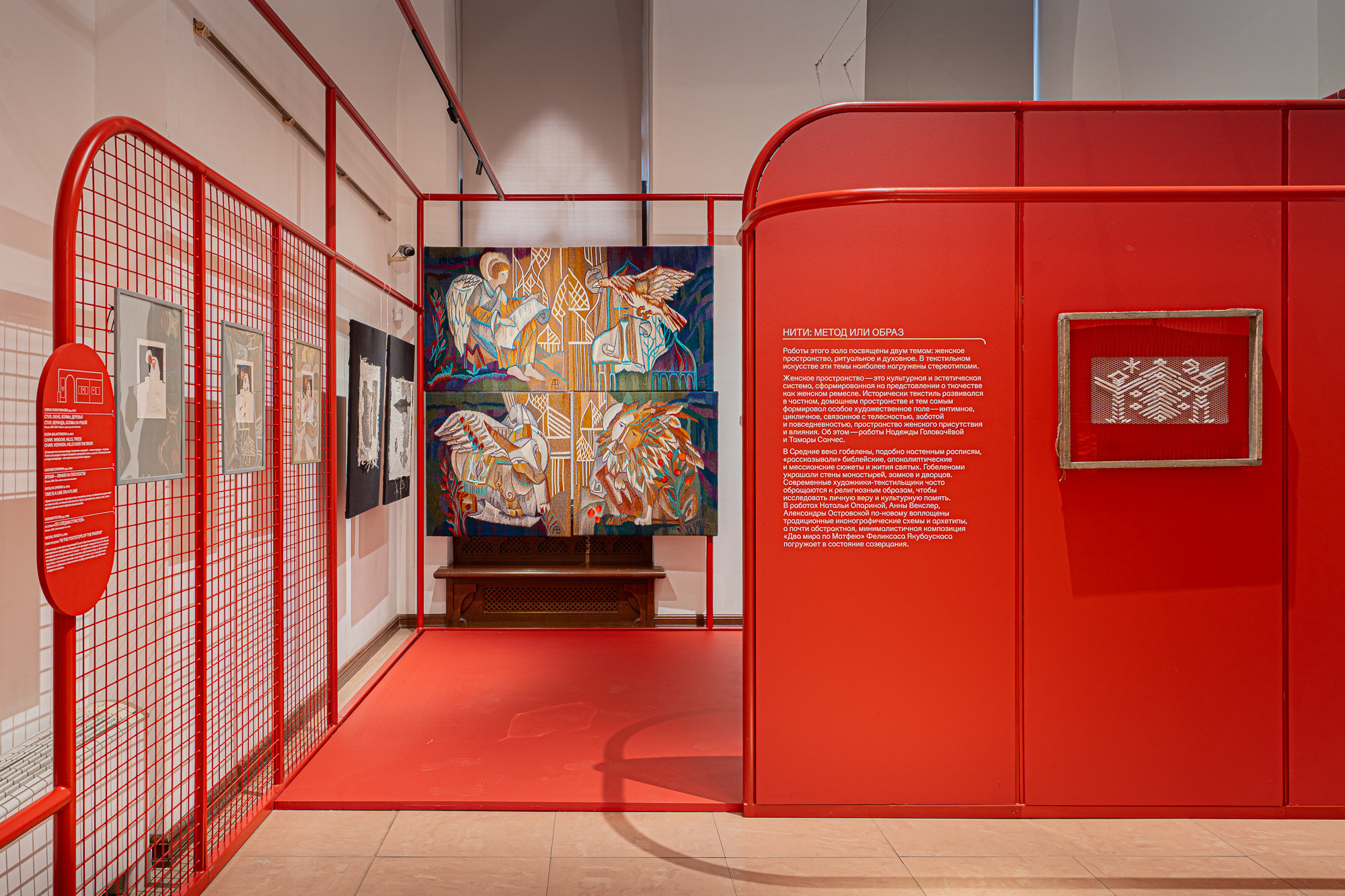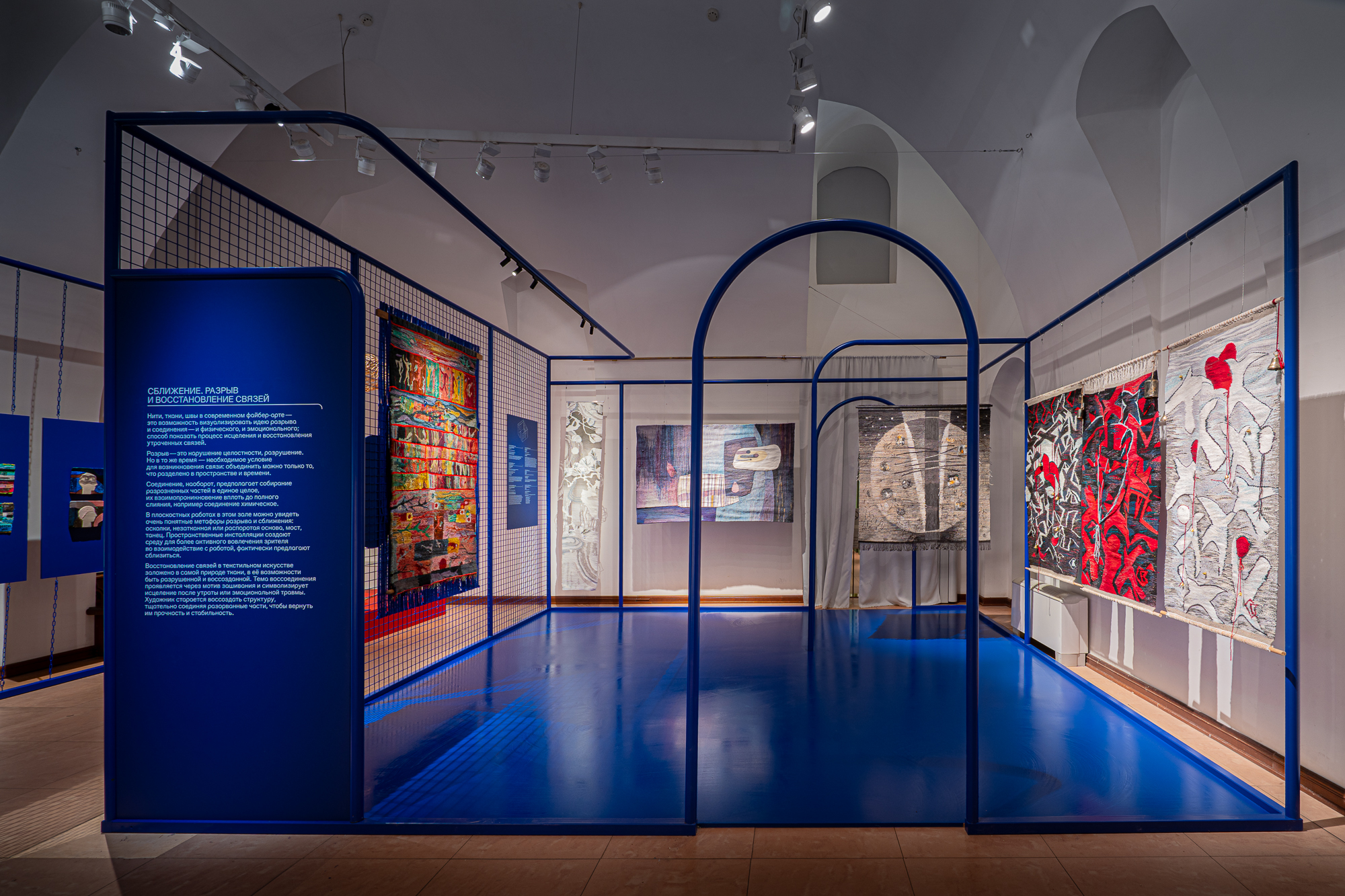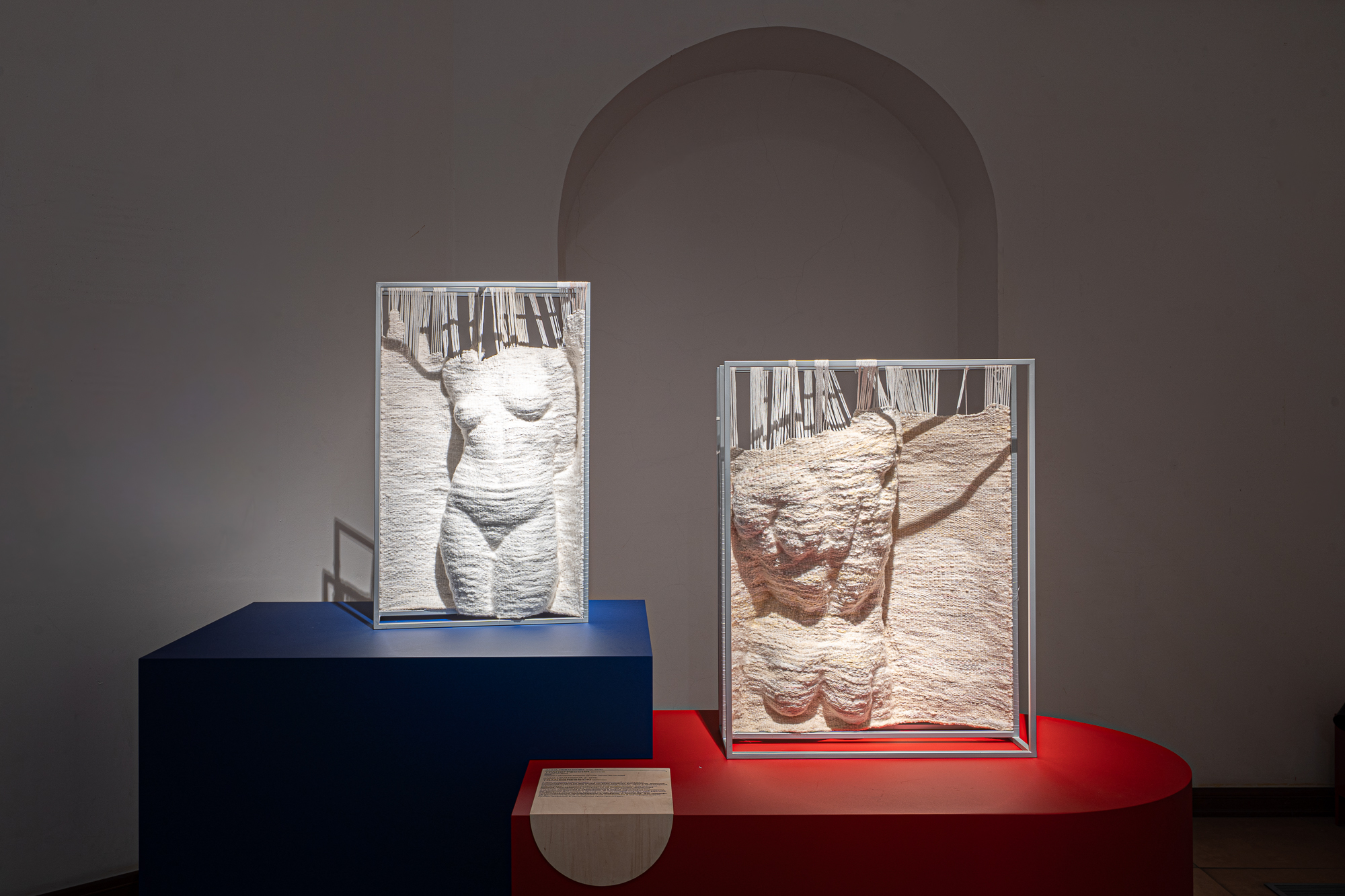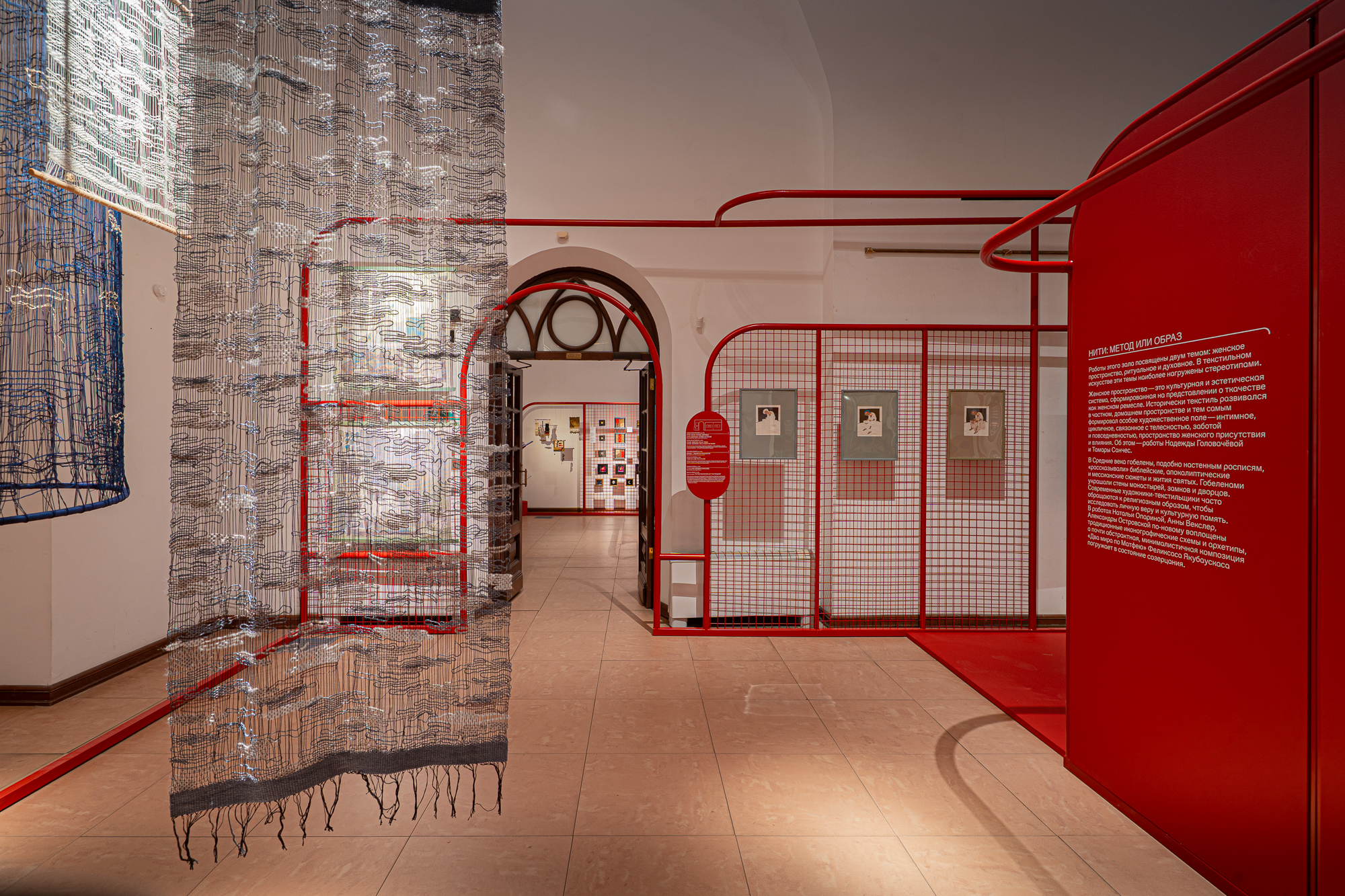The V Triennale of Textile Art and Tapestry is displaying more than 80 works by international contemporary artists. The architects’ task was to create a conceptual thread to unite the works of the participants and thus fulfil the tradition of showcasing the latest textile techniques.
While designing the exhibition, the architects were inspired by the work of the renowned textile artist Gunta Stölzl — the first woman to take on the position of a master at the renowned Bauhaus School. At the beginning of the 20th Century she revolutionised the school’s structure and transformed the weaving workshop into one of its most successful departments.
The secret of Stölzl’s success was not only her love for textile arts, but the abstract, industrial designs she experimented with using the newest synthetic fabrics. Following the dissolution of the Bauhaus School, Stölzl stopped teaching and devoted herself entirely to her work. Many of the pieces created in this period became permanent exhibits in contemporary art museums during her lifetime.
The modular solutions of the V Triennale’s design — light, linear and colourful — were based precisely on the artist’s revolutionary concepts. Vividly coloured linear fragments echo the aesthetics of Constructivism that were associated with the Bauhaus’s principles and architecture. The almost uninterrupted constructions reflect the central theme of the exhibition.
This year’s slogan, ‘The diversity of connections: threads, interruptions, connections’, highlights the most important components of textile art. These images also reveal the ongoing emergence of newer art, which appears from the intersection of the least obvious variety of materials. The texture explications, reminiscent of plain wood, allude to invisible yet tangible connections: the folk origins of textile art as one of the many branches of the historical tree of peoples and art.
